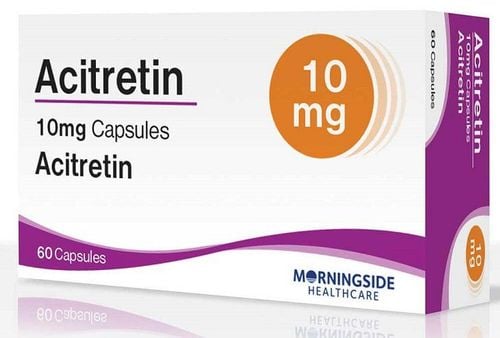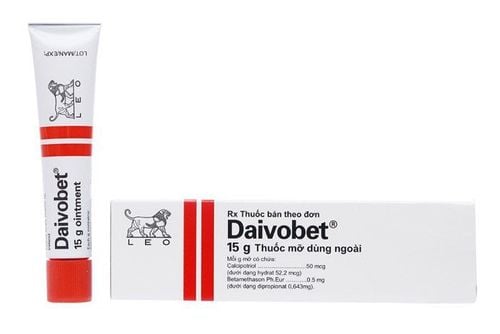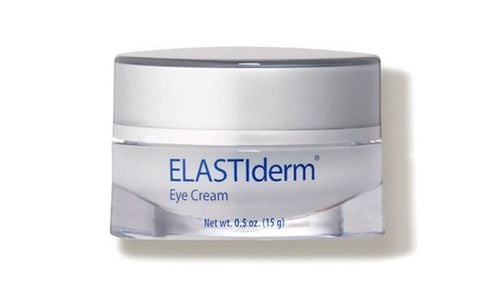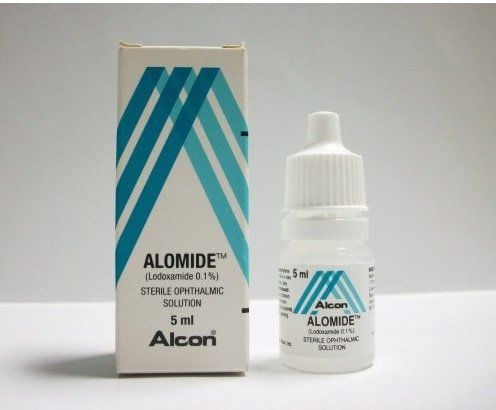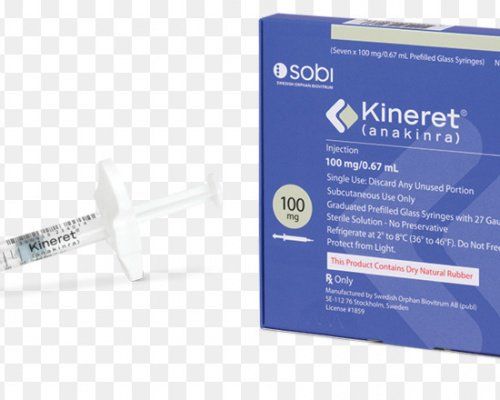This is an automatically translated article.
Emidexa 16 mg drug is commonly used to treat rheumatism, collagen disease, allergies, endocrine disorders and other indications. Continue reading the article below to help you better understand Emidexa 16.
1. What is Emidexa 16?
Emidexa is a pain reliever, antipyretic, non-steroidal anti-inflammatory drug. The drug is prepared in the form of 16 mg tablets with the main ingredient being Methylprednisolone, produced by Ba Dinh Biopharmaceutical Joint Stock Company.
Emidexa 16 mg is prescribed by doctors for use in the following cases:
Short-term complementary therapy to help patients with bone and joint problems avoid exacerbations or acute in the following cases: Rheumatoid arthritis, including rheumatoid arthritis in children. Ankylosing spondylitis.
Acute and subacute bursitis. Inflammation of the synovial membrane of the joints. Nonspecific bursitis tendinitis. Post-traumatic osteoarthritis. Arthritis, psoriasis. Inflammation of the supracondylar process. Acute gouty arthritis. Maintenance or acute therapy in cases of collagen disease:
Systemic lupus erythematosus. Systemic polymyositis. Low heart rate. Skin diseases:
Pemphigus. Various erythema. Seborrheic dermatitis. Exfoliative dermatitis. Psoriasis disease. Allergic diseases :
Seasonal allergic rhinitis. Hypersensitivity to the drug. Serum disease. Contact dermatitis. Asthma. Allergic dermatitis. Eye disease:
Allergic conjunctivitis. Ocular neuritis. Iritis of the ciliary body. Keratitis . Respiratory diseases :
Aspiration pneumonia. Sarcoid disease. Beryllium poisoning. Loeffler syndrome. Blood diseases:
Hemolytic anemia. Idiopathic thrombocytopenic purpura in children. Secondary thrombocytopenia in children. Decrease in erythrocytes. Congenital hypoplastic anemia. Tumor disease:
Childhood leukemia and lymphoma. Cancer: such as lymphoma, acute leukemia, breast cancer or advanced prostate cancer. Endocrine disorders:
Primary and secondary adrenal insufficiency: methylprednisolone can be used but must be combined with a mineralocorticoid such as hydrocortisone or cortisol. Congenital adrenal hyperplasia. Non-fouling thyroiditis. Hypercalcemia in cancer. Other indications :
Crohn's disease. Causes diuresis or decreased proteinuria in nephrotic syndrome. Exacerbation of multiple sclerosis (nervous system)Tuberculosis meningitis.
2. Pharmacodynamics and pharmacokinetics
Pharmacodynamics:
Methylprednisolone is a synthetic glucocorticoid and a methyl derivative of prednisolone.
Methylprednisolone is still known to be a potent anti-inflammatory that has a profound inhibitory effect on the immune system. Due to prednisolone methylation, the effects of salt-metabolizing corticosteroids have been excluded, so there is little risk of Na+ retention, and edema. The anti-inflammatory effect of methylprednisolone was increased by 20% compared with that of prednisolone; 4mg of methylprednisolone is as potent as 20mg of hydrocortisone.
Inflammation, any of the aetiologies, is characterized by extravasation and infiltration of leukocytes into the inflamed tissue (site). Glucocorticoids inhibit these phenomena. Systemic administration of glucocorticoids increases the number of neutrophils and decreases the number of lymphocytes, eosinophils, and monocytes in the peripheral blood. The increase in neutrophils is due to increased mobilization of neutrophils from bone marrow reserves, because their half-life in the circulating blood is prolonged, and because extravasation and infiltration into the site of inflammation are reduced. Go. Perhaps this last cause is one of the main mechanisms for the anti-inflammatory effects of glucocorticoids. A decrease in the number of lymphocytes, eosinophils and monocytes in the circulating blood is the result of their transport from the vasculature into the lymphoid tissue. Glucocorticoids also inhibit the function of lymphocytes and tissue macrophages. Their responsiveness to antigens and mitogens is reduced. The effect of glucocorticoids on macrophages is particularly pronounced, limiting their phagocytosis, their ability to kill microorganisms and the production of interferon - gamma, interleukin - 1, pyrogens, enzymes collagenase and elastase, swelling necrosis factor and plasminogen activator. Glucocorticoids act on lymphocytes to reduce interleukin production - 2.
In addition to effects on leukocyte function, glucocorticoids also affect inflammatory responses by reducing prostaglandin synthesis by activating phospholipase A2. Glucocorticoids decrease capillary permeability by inhibiting the activity of kinins and bacterial endotoxins and by reducing the amount of histamine released by basophils.
Glucocorticoids work primarily by binding to and activating intracellular glucocorticoid receptors. Activated glucocorticoid receptors bind to promoter regions of DNA (which can either activate or block transcription) and activate transcription factors that lead to inactivation of genes through deacetylation histones.
After administration of corticosteroids, there are several hours to see clinical effects due to changes in gene expression.
Other effects unrelated to gene expression may be more immediate.
Corticosteroids affect the kidneys and fluid and electrolyte balance, lipid, protein and carbohydrate metabolism, skeletal muscle, cardiovascular system, immune system, nervous system, and endocrine system. Corticosteroids are also important in maintaining function under stress.
Pharmacokinetic properties:
Absorption: Methylprednisolone is rapidly absorbed and maximum plasma concentrations of methylprednisolone are reached approximately 1.5 to 2.3 hours after oral administration in normal healthy adults. The absolute bioavailability of methylprednisolone in normal healthy subjects is generally high (82% to 89%) after oral administration. Distribution: Methylprednisolone is widely distributed into tissues, crosses the blood-brain barrier and is excreted in human milk. Its apparent volume of distribution is about 1.4 L/kg. The human plasma protein binding of methylprednisolone is approximately 77%. Metabolism: Corticosteroids are metabolized mainly in the liver but also in the kidneys and are excreted in the urine. In humans, methylprednisolone is metabolised in the liver to inactive metabolites; The main ones are 20α-hydroxy methylprednisolone and 20β-hydroxymethyl prednisolone. Metabolism in the liver occurs mainly through the enzyme CYP3A4. Methylprednisolone, like many CYP3A4 substrates, may also be a substrate for the ATP-binding p-glycoprotein transporter (ABC), affecting tissue distribution and interactions with other drugs. Elimination: The mean half-life of total methylprednisolone ranges from 1.8 to 5.2 hours. Total clearance is about 5 to 6 mL/min/kg.
3. Contraindications of Emidexa 16 mg
Patients with hypersensitivity to the drug components Emidexa 16 mg; Patients with systemic infections unless specific anti-infective therapy is applied; The patient is receiving a live virus vaccine, a reduced motivation vaccine; Severe infections such as tuberculous meningitis and septic shock; Skin lesions caused by viruses, fungi or tuberculosis.
4. Side effects of Emidexa 16 mg
Undesirable effects most often occur with high doses and long-term use of Emidexa.
Common:
Central nervous system: Insomnia, nervous excitability. Digestion: Increased appetite, indigestion. Skin: Hairy. Endocrine and metabolic: Diabetes mellitus. Neuromuscular and skeletal: Arthralgia. Eyes: Cataracts, glaucoma. Respiratory: Nosebleeds. Uncommon:
Central nervous system: Dizziness, convulsions, psychosis, brain pseudotumor, headache, mood swings, delirium, hallucinations, euphoria. Cardiovascular: Edema, hypertension. Skin: Acne, skin atrophy, bruising, tissue hyperpigmentation. Endocrine and metabolic: Cushing's syndrome, pituitary-adrenal axis suppression, growth retardation, glucose intolerance, hypokalemia, alkalosis, amenorrhea, sodium and water retention, hyperglycemia. Gastrointestinal: Stomach ulcer, nausea, vomiting, abdominal distension, esophagitis, pancreatitis. Nerve - muscle and bone: Muscle weakness, osteoporosis, fracture. Other: Hypersensitivity reactions. Guidelines for management:
In acute indications, glucocorticoids should be used at the lowest dose and for the shortest duration of clinical effect. After long-term glucocorticoid therapy, if hypothalamic-pituitary-adrenal axis suppression is likely to occur, it is urgent to reduce the glucocorticoid dose gradually, rather than abruptly. Monitor and periodically evaluate parameters of osteoporosis, hematopoiesis, glucose tolerance, ocular effects and blood pressure. Prophylaxis of gastric and duodenal ulcers with H2-histamine antagonists when using high doses of systemic methylprednisolone. All patients on long-term glucocorticoid therapy should take calcium supplements to prevent osteoporosis. Persons potentially immunosuppressed by glucocorticoids should be warned about the potential for bacterial infection. Patients undergoing surgery may require glucocorticoid supplementation because the normal response to stress has been impaired by suppression of the hypothalamic-pituitary-adrenal axis.
5. Drug interactions
Methylprednisolone is an inducer of cytochrome P450 enzyme and a substrate of P450 3A enzyme, so this drug affects the metabolism of Erythromycin, Ciclosporin, Phenobarbital, Phenytoin, Ketoconazole, Carbamazepine, Rifampicin. Phenytoin, Rifampin, Phenobarbital and other hypokalaemic diuretics may decrease the potency of Methylprednisolone in Emidexa Methylprednisolone may cause hyperglycemia, requiring higher insulin doses.
6. Use caution
Use with caution in people with osteoporosis, psychiatric disorders, new vascular shunts, peptic ulcers, duodenal ulcers, patients with diabetes, hypertension, heart failure and growing children. Because of the risk of adverse events, systemic corticosteroids should be used with caution in the elderly, starting with the lowest dose and for the shortest possible duration. Acute adrenal insufficiency may occur with abrupt discontinuation of the drug after prolonged therapy or in the presence of stress. When used in high doses, the effectiveness of vaccination may be affected. Children may be more sensitive to adrenal suppression during topical treatment.
7. How to use Emidexa 16 mg effectively
How to use:
Starting dose 4-48mg/day. The dose should be maintained and adjusted until a satisfactory response is obtained. If treatment is prolonged, the lowest possible dose should be determined by reducing the dose gradually until signs or symptoms improve. The drug should not be stopped suddenly during long-term use of high doses, the dose must be reduced gradually. Your doctor will prescribe the minimum dose to be effective. If prescribed by your doctor to take the drug once a day, it should be taken in the morning (at 8 am). Swallow the tablet whole with plenty of water, do not chew or crush the tablet. After long-term therapy, the doctor will consider and prescribe the gradual discontinuation of Methylprednisolone. If symptoms reappear or worsen when the dose of Methylprednisolone has been reduced, consult your doctor immediately. Dosage:
Sarcoid disease: 0.8mg/kg/day. Low maintenance dose: 8mg/day. Exacerbation of multiple sclerosis: The daily dose is 160mg, used for 1 week, then reduce the dose to 64mg daily, used for 1 month. Rheumatoid Arthritis: The starting dose is 4 to 6 mg of methylprednisolone per day. During acute episodes, use higher doses: 16 to 32 mg/day, then tapered rapidly. Systemic myositis: 48 mg Systemic lupus erythematosus: 16-100 mg Acute rheumatic fever: 48 mg until ERS normal for 1 week Allergic disease: 16-40 mg Asthma : Emidexa 32 to 48 mg per day, for 5 days, followed by additional treatment at a lower dose for one week. When recovering from an acute attack, the dose of Emidexa is tapered rapidly. Eye disease :16-40 mg Blood and white blood cell disease : 16-100 mg Malignant lymphoma: 16-100 mg Ulcerative colitis: 16-60 mg Crohn's disease: In acute phase can take up to 48 mg/day Organ transplant: Dosage 3.6 mg/kg/day Sarcoidosis: 32 – 48 mg in alternate days Polymyalgia rheumatica: 64 mg Pemphigus disease: 80 – 360 mg Here is the information about the use, how to use and note when using Emidexa 16 mg. All information in this article is for reference only. The use of the drug must be under the guidance of a specialist.
Please dial HOTLINE for more information or register for an appointment HERE. Download MyVinmec app to make appointments faster and to manage your bookings easily.




